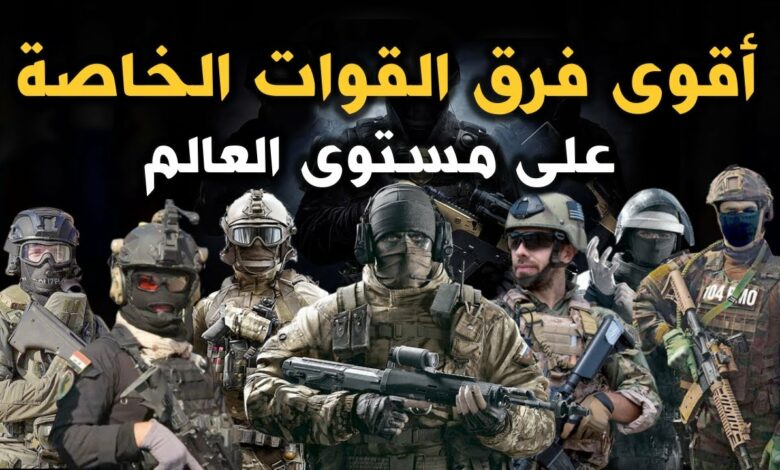Department of Security and Military Studies March 29, 2024
What are Special Forces?

The reputation of “Special Forces” have recently risen in modern armies, and the accurate term is “Special Operations Forces” (SOF). These forces are tasked with executing missions that differ from traditional combat. This distinction may arise from the nature of the combat zone, such as urban warfare, dense forests, or mountainous and snowy regions, or from the need for unconventional methods of transportation to reach hazardous areas deep within enemy territory. Here, specialized techniques, skills, and means of transportation are required, such as airborne parachute landings, helicopter insertions behind enemy lines, or amphibious assaults on enemy shores. The difference may also lie in the nature of the mission itself, such as hostage rescue, disrupting enemy supply lines, deep enemy reconnaissance, headquarters assaults, or capturing individuals.
Origins

The concept of Special Operations Forces began to emerge during World War II when the German Army established the “Brandenburgers” units, which conducted secret special missions behind enemy lines. Currently, armies establish “Special Operations Forces” within their organizational structure because traditional units are unable to execute all missions, especially those that are dangerous and specialized. The nature of their training and equipment does not suit these difficult and complex tasks. Special Forces complement the work of traditional forces in major plans and achieve objectives in the theater of operations.
Classification and Capabilities

The classification of Special Forces at the global level differs from that of traditional armies. Traditional armies are subject to known criteria, notably the level of armament, including aircraft, tanks, warships, submarines, ballistic missiles, and nuclear capabilities, among others. In contrast, the classification of Special Forces relies on two fundamental factors: first, the level of physical and psychological capabilities (combat ability, resilience, and endurance), which are difficult to compare and measure accurately. Second, the level of development and effectiveness of the equipment and tools possessed by these forces, which depends not only on the technical aspect characterized by secrecy and mystery but also on other factors related to fighters, such as skill, courage, intelligence, and experience in using these tools and equipment.
Top 8 Special Forces Units Globally:
1. The US Navy SEALs (Sea-Air-Land operators), the most globally renowned.
2. Russia’s Alpha Group.
3. The UK Special Boat Service.
4. The British Special Air Service.
5. France’s National Gendarmerie Intervention Group, or GIGN.
6. Spain’s Unidad de Operaciones Especiales.
7. The Special Services Group in Pakistan.
Conclusion

The importance of “Special Operations Forces” in modern armies is increasing in the face of terrorism, transnational organized crime, counterinsurgency, and confronting violent non-state military groups, also known as Violent Non-State Actors (VNSAs). Additionally, in the context of the significant spread and expansion of the so-called “Gray Zone,” where neither war nor peace prevails, Special Forces can execute covert missions appropriate to this situation when total war is undesirable.
Undoubtedly, the future of Special Operations Forces holds promise as they will be equipped with the latest military equipment and technologies, and their role and importance will evolve at tactical, operational, and strategic levels.

